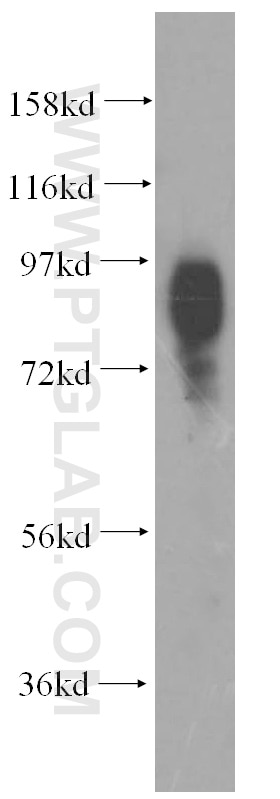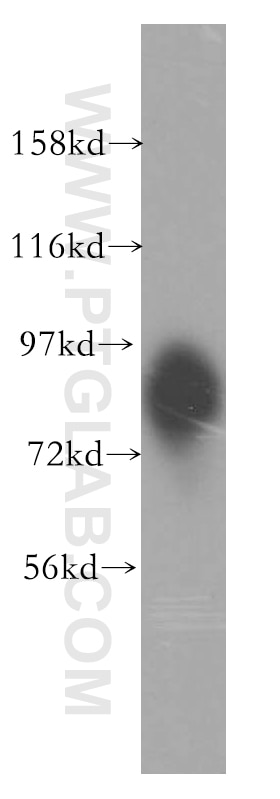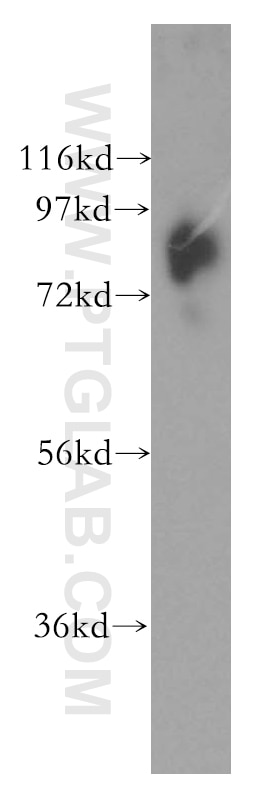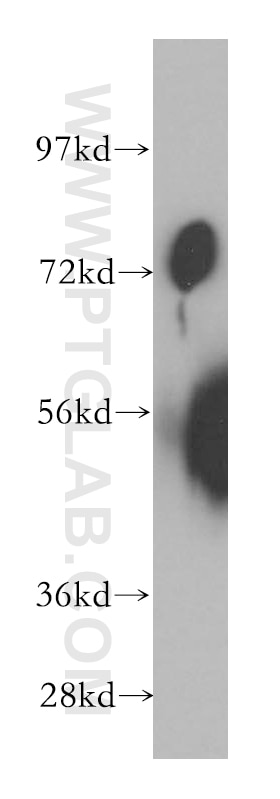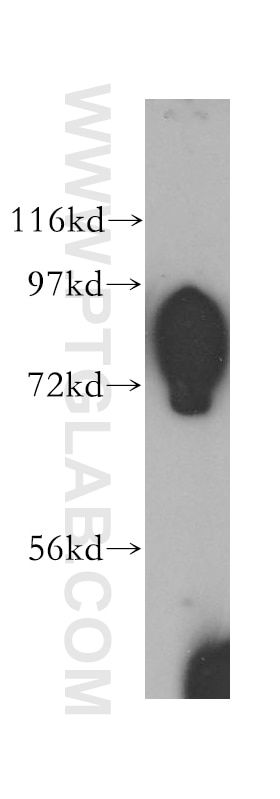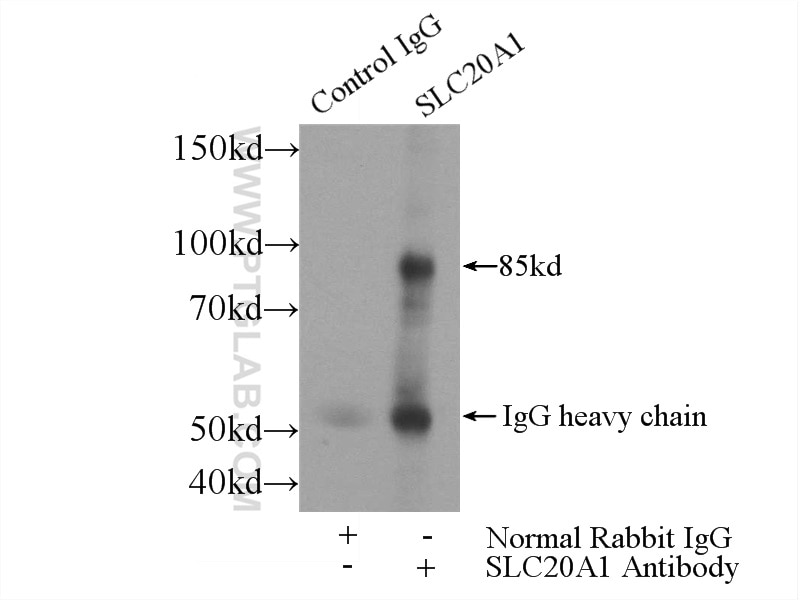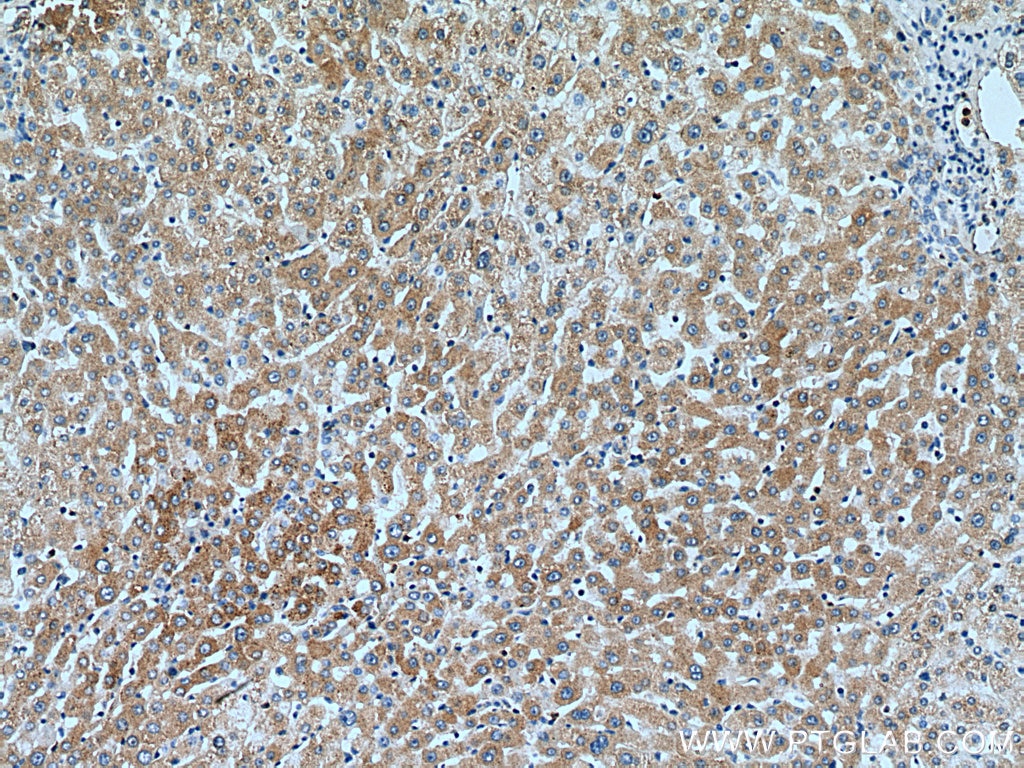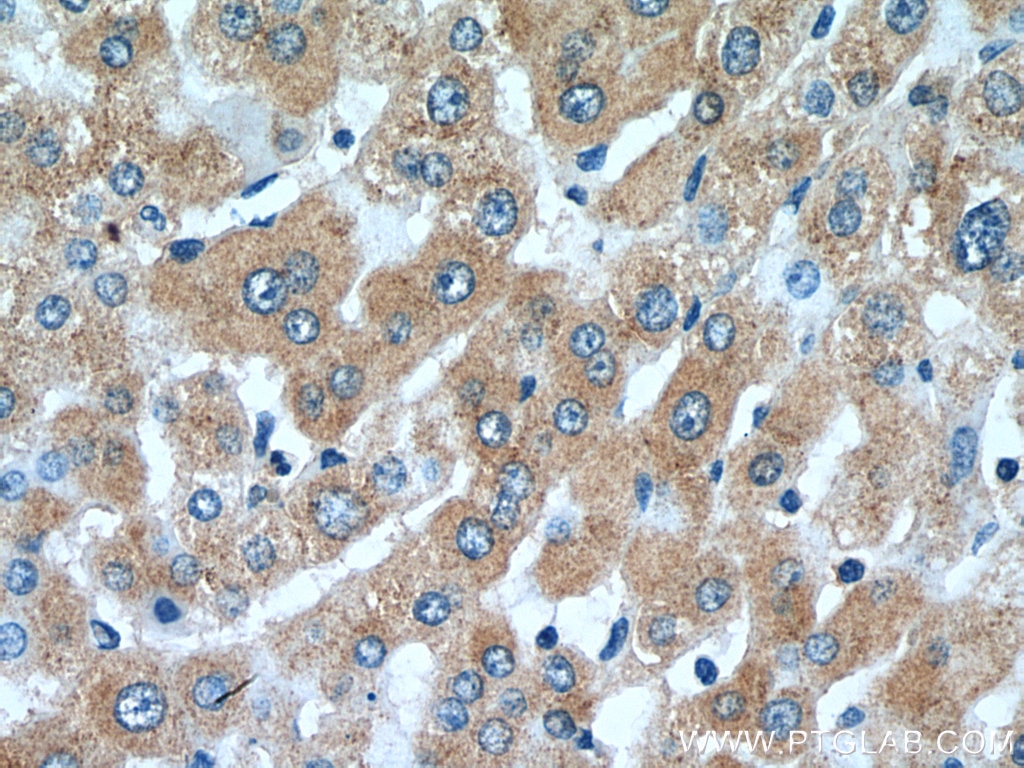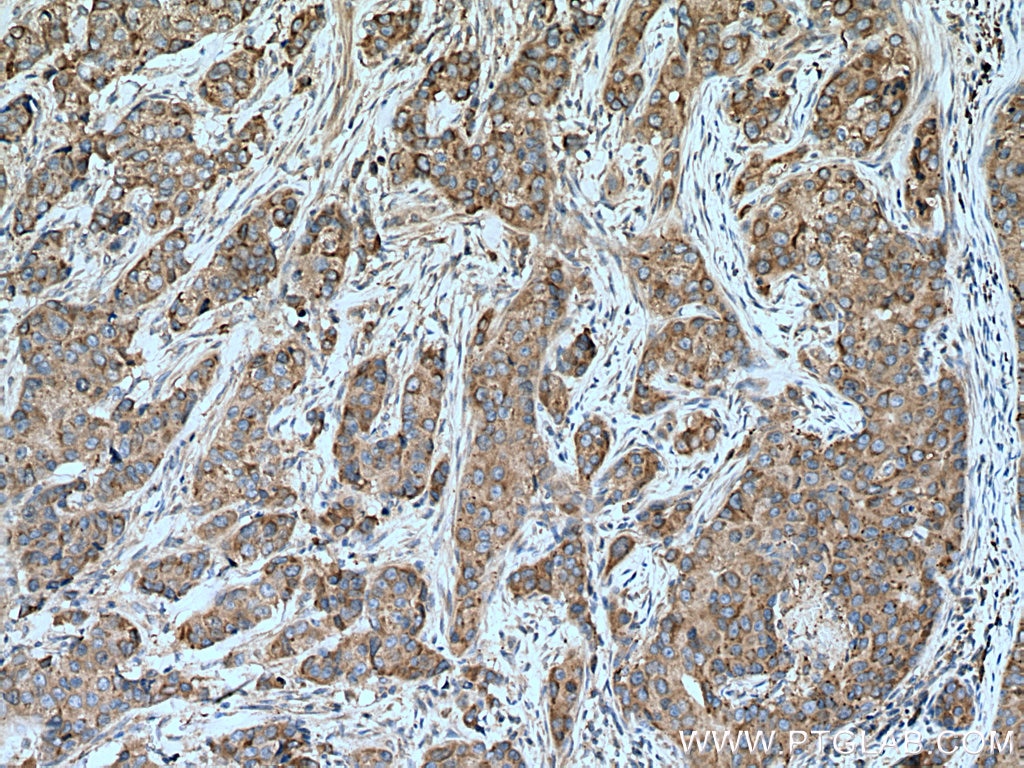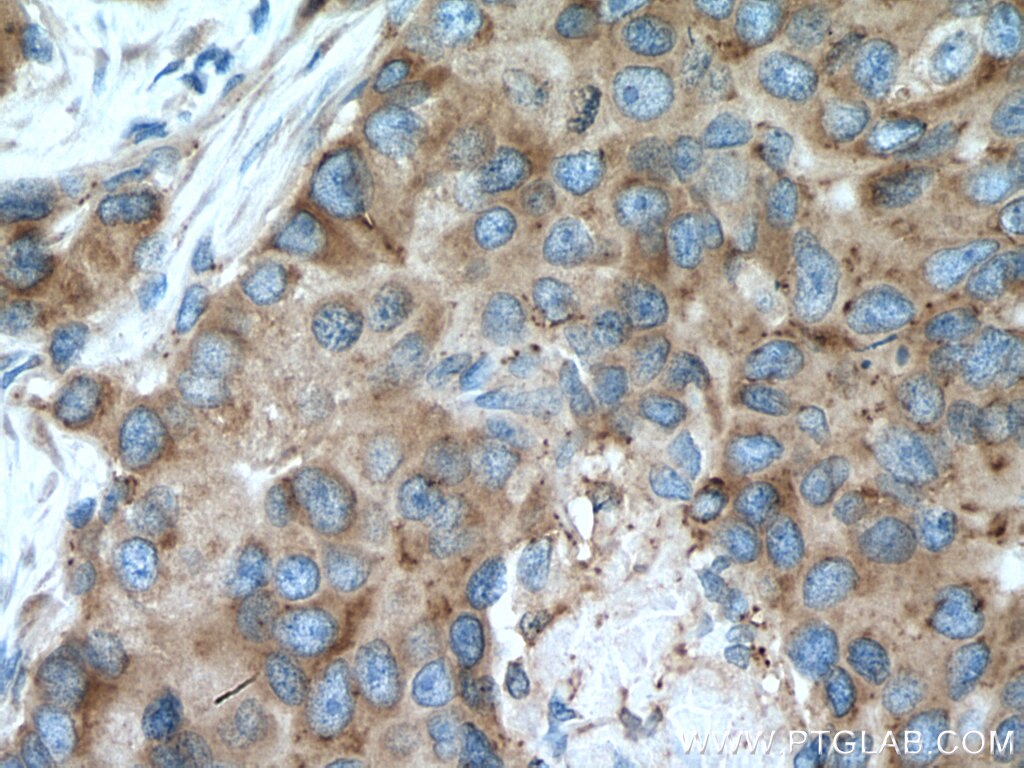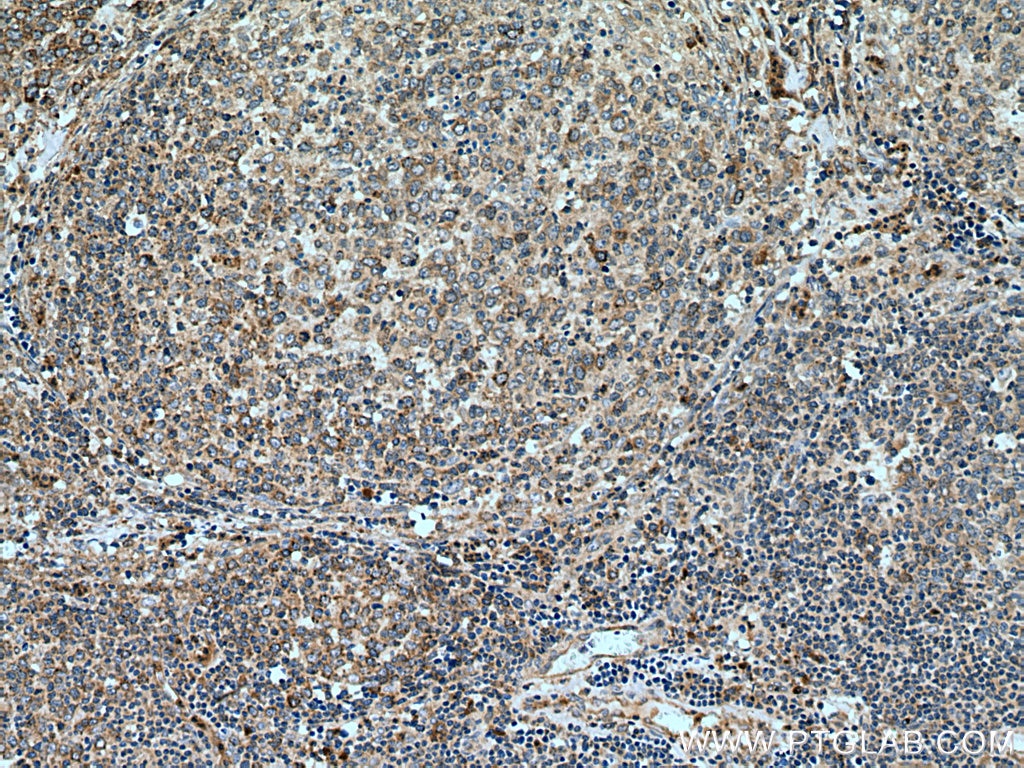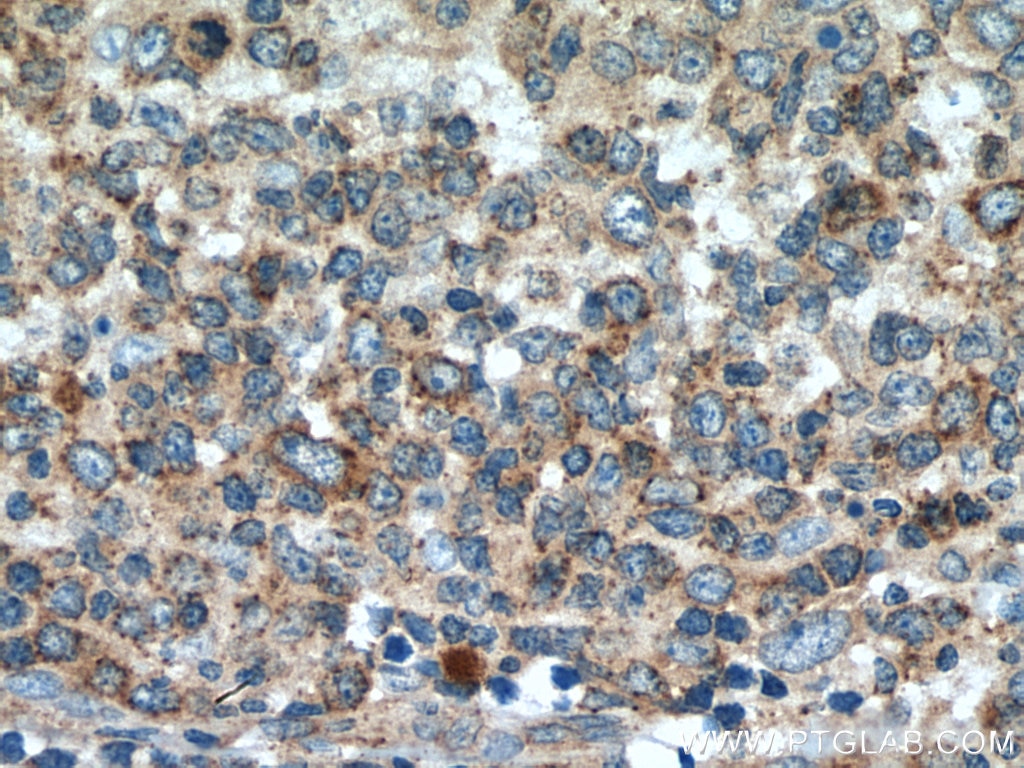Validation Data Gallery
Tested Applications
| Positive WB detected in | HEK-293 cells, HeLa cells, human kidney tissue, Jurkat cells, K-562 cells |
| Positive IP detected in | HEK-293 cells |
| Positive IHC detected in | human liver tissue, human breast cancer tissue, human lymphoma tissue Note: suggested antigen retrieval with TE buffer pH 9.0; (*) Alternatively, antigen retrieval may be performed with citrate buffer pH 6.0 |
Recommended dilution
| Application | Dilution |
|---|---|
| Western Blot (WB) | WB : 1:500-1:1000 |
| Immunoprecipitation (IP) | IP : 0.5-4.0 ug for 1.0-3.0 mg of total protein lysate |
| Immunohistochemistry (IHC) | IHC : 1:50-1:500 |
| It is recommended that this reagent should be titrated in each testing system to obtain optimal results. | |
| Sample-dependent, Check data in validation data gallery. | |
Product Information
12423-1-AP targets SLC20A1 in WB, IHC, IF, IP, CoIP, ELISA applications and shows reactivity with human samples.
| Tested Reactivity | human |
| Cited Reactivity | human, mouse, rat, zebrafish |
| Host / Isotype | Rabbit / IgG |
| Class | Polyclonal |
| Type | Antibody |
| Immunogen | SLC20A1 fusion protein Ag3084 相同性解析による交差性が予測される生物種 |
| Full Name | solute carrier family 20 (phosphate transporter), member 1 |
| Calculated molecular weight | 679 aa, 74 kDa |
| Observed molecular weight | 85 kDa |
| GenBank accession number | BC019944 |
| Gene Symbol | SLC20A1 |
| Gene ID (NCBI) | 6574 |
| RRID | AB_2286212 |
| Conjugate | Unconjugated |
| Form | Liquid |
| Purification Method | Antigen affinity purification |
| UNIPROT ID | Q8WUM9 |
| Storage Buffer | PBS with 0.02% sodium azide and 50% glycerol , pH 7.3 |
| Storage Conditions | Store at -20°C. Stable for one year after shipment. Aliquoting is unnecessary for -20oC storage. |
Background Information
SLC20A1 (also known as PiT1) is a high-affinity sodium-dependent phosphate (Pi) import protein. It is widely expressed and plays a fundamental housekeeping role in phosphate transport, such as absorbing phosphate from interstitial fluid for normal cellular functions. SLC20A1 is involved in cell proliferation, tumor growth and cell signaling independently of its transport function. SLC20A1 also functions as a retroviral receptor, causing human cells to be susceptible to infection by gibbon ape leukemia virus, simian sarcoma-associated virus, feline leukemia virus subgroup B, and 10A1 murine leukemia virus.
Protocols
| Product Specific Protocols | |
|---|---|
| WB protocol for SLC20A1 antibody 12423-1-AP | Download protocol |
| IHC protocol for SLC20A1 antibody 12423-1-AP | Download protocol |
| IP protocol for SLC20A1 antibody 12423-1-AP | Download protocol |
| Standard Protocols | |
|---|---|
| Click here to view our Standard Protocols |
Publications
| Species | Application | Title |
|---|---|---|
Nat Cancer GAP43-dependent mitochondria transfer from astrocytes enhances glioblastoma tumorigenicity | ||
Adv Healthc Mater Correlating Material Properties to Osteoprotegerin Expression on Nanoparticulate Mineralized Collagen Glycosaminoglycan Scaffolds
| ||
J Biol Chem Phosphate (Pi)-regulated heterodimerization of the high-affinity sodium-dependent Pi transporters PiT1/Slc20a1 and PiT2/Slc20a2 underlies extracellular Pi sensing independently of Pi uptake. |
